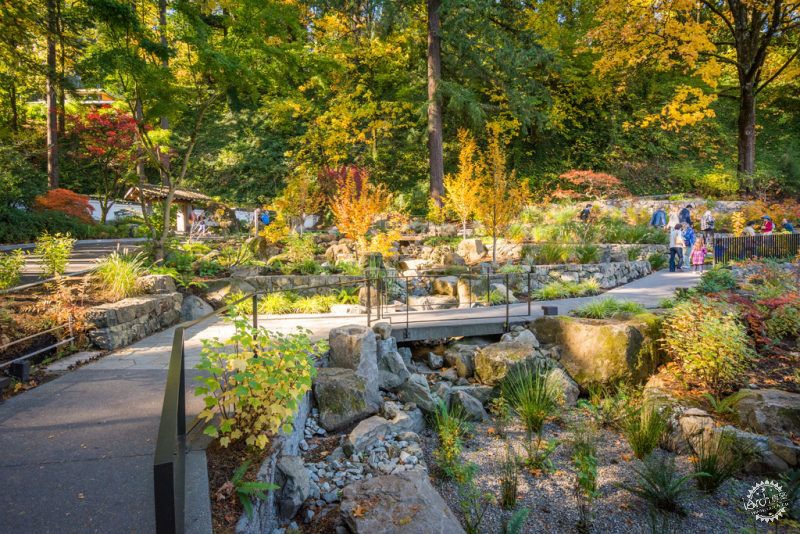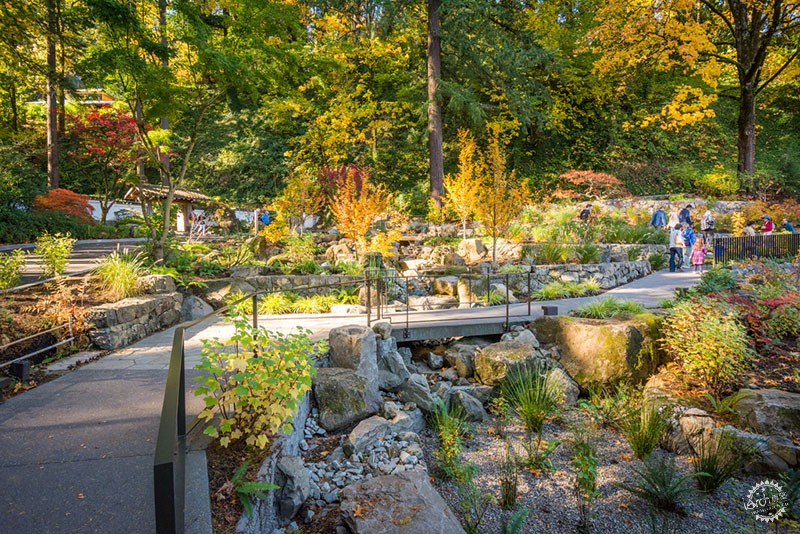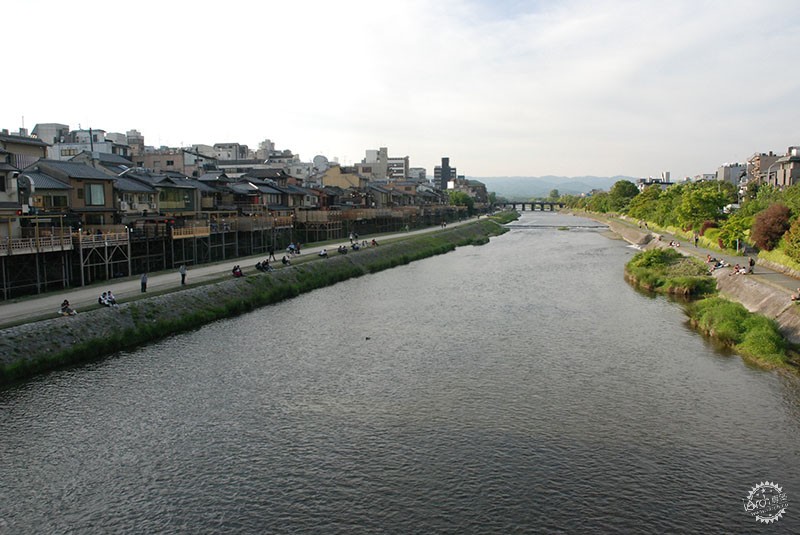
Listening to Nature – and Each Other
由专筑网孙佳,李韧编译
景观设计师同其他许多设计师一样,经常碰到所谓的“棘手”问题。“棘手”这个词并非完全贬义,同样也可以指代那些由于矛盾、信息变化以及特殊要求而导致的困难问题。城市过度拥挤、气候变化、经济差异以及绿色空间的缺乏,所有这些都是棘手的问题。作为设计师,我们希望并期望不仅能够解决棘手的问题,而且还能够创造出让人们感到舒适的环境。
1969年,伊恩•麦克哈格的著作《设计结合自然》很有影响力,他将关注点集中在当时相对较新的想法上,即我们在规划和设计时通过仔细考虑生态和景观特征,从而更好地塑造地球环境。与此同时,在日本,早在十一世纪就十分注重自然环境的适应性,这些从一些早期文献就能看出。
就当前而言,倾听自然也包括感知气候变化的迹象。这是波特兰(俄勒冈州)日本花园 2017年扩建项目的重要组成部分,日本隈研吾建筑事务所在日本传统建筑的启发下,设计建立了建筑综合体。花园坐落在波特兰西山,俯瞰城市,为当地人和游客提供宁静的城市绿洲。项目设计于1963年,占地12英亩(约4.8公顷),拥有8座独立的特色花园,其中包括日式茶馆、蜿蜒的溪流、私密的人行道和壮观的胡德雪山山景。这座全新的文化村,是结合了建筑和景观庭院的复合体,也是对日本建筑传统的全新诠释,游客可以在这里体验各种日本传统艺术节目。这是一件很美好的事情,同时它也代表了与大自然的结合,大型滑动窗墙使得光线和新鲜空气进入室内,由多孔薄瓷砖组成的居住屋顶减少了径流,促进建筑小气候的形成,地热发电的热辐射加热可以减少对人工系统的需求。
Landscape architects — like many designers — regularly engage with what are commonly called ‘wicked’ problems. Wicked not in the sense of evil, but in the other definition: a problem that is difficult or thorny due to incomplete, contradictory, and constantly changing information, and requirements that are hard to recognize. Urban overcrowding, climate change, economic disparity, and inequity in green space access – wicked problems, all. As designers, we hope and expect to not only be able to conquer wicked problems, but also manage to create works of sublime beauty that are a pleasure for people to occupy and use.
Ian McHarg’s influential 1969 Design With Nature focused attention on the then relatively-new idea that we shape the earth best when we plan and design with careful regard to both the ecology and the character of the landscape. In Japan, meanwhile, the importance of listening to and taking lessons from nature had been in practice as early as the eleventh century, as can be gleaned from the medieval garden treatise Sakuteiki.
Listening to nature now also includes perceiving the signs of climate change. This was an important component of the Portland (Ore.) Japanese Garden’s 2017 expansion project, for which the Tokyo architecture firm of Kengo Kuma and Associates created a LEED-certified complex of buildings inspired by traditional Japanese architecture. The Garden sits nestled in the West Hills of Portland, overlooking the city and providing a tranquil urban oasis for locals and travelers alike. Designed in 1963, it encompasses 12 acres with eight separate garden styles, and includes an authentic Japanese tea house, meandering streams, intimate walkways, and a spectacular view of Mt. Hood. The new Cultural Village — a complex of buildings and courtyard with a modern interpretation of Japanese architectural tradition — is a place where visitors can immerse themselves in a variety of programs in traditional Japanese arts. It is indeed a thing of sublime beauty. But it also represents design in collaboration with nature: large sliding window walls allow access to light and fresh air, living rooftops made of porous thin ceramic tiles decrease runoff and contribute to the buildings’ climate control, and geothermal-powered hydronic radiant heating minimizes the need for energy to heat and cool the buildings.

来源于波特兰日本花园的河道蓄水池。照片版权:波特兰日本花园/The top of Sadafumi Uchiyama’s dry creekbed, which channels runoff from the Portland Japanese Garden to a concealed holding tank. Photo courtesy of the Portland Japanese Garden.
游客到达陡峭山坡底部的欢迎中心,然后步行或乘坐班车来到山顶,到达文化村之后,继续前往五座传统花园。前者包括一座小型城市庭院花园,这是由第十五代日本石匠建造的城墙,还有盆景收藏品。扩建项目还将山坡改造成了游客进入花园的体验场所。工人们将山坡上的一些入侵物种去除,并且恢复了一些原生植物,但最重要的改造在于水管理中。花园策展人、景观设计师和第四代日本园艺师Sadafumi Uchiyama设计了来源于日本石材的传统绿色基础设施系统。一条石溪床从山坡的顶部一直延伸到停车场,在山坡上过滤径流,同时也是引人注目的线性元素,在视觉上连接上部和下部花园区域。水流进入停车场下方近27,000加仑的储水箱,并缓慢释放到城市的雨水和下水道系统中。对于花园每年近50万游客来说,小河床是花园中极具特色的设计元素,但它也是关键的基础设施。预测显示,俄勒冈州的年降水量将在寒冷天气期间增加,未来的降水模式估计也比过去更加难以预测。Willamette河谷呈现典型的夏季干燥、秋季潮湿的气候状况,冬季和早春的月份很可能会变得更加严重,这意味着夏季的缺水和明显更高的径流区位将会成为新常态。
Garden visitors arrive at the Welcome Center at the bottom of a steep hill, and ascend the hill either on foot or by shuttle to reach the Cultural Village before continuing to the five traditional gardens. The former includes a small urban courtyard garden, a castle wall constructed by a fifteenth generation Japanese stonemason, and a bonsai collection. The expansion project also transformed the hillside into an essential part of visitors’ experience of entering the Garden. Work on the hillside included removal of invasive species and native plant restoration, but its most significant transformation focused on water management. Garden Curator, landscape architect, and fourth-generation Japanese gardener Sadafumi Uchiyama designed a green infrastructure system rooted in Japanese stone-setting tradition. A stone creek bed runs from the top of the hillside all the way down to the parking lot, channeling and filtering runoff down the hill while serving as a striking linear element visually connecting the upper and lower Garden areas. Water goes into a nearly 27,000 gallon holding tank under the parking lot and is slowly released into the city’s combined storm water and sewer system. To the Garden’s nearly half-million annual visitors, the creek bed is an aesthetically pleasing design element of the Garden. But it’s also a critical piece of infrastructure. Projections show that annual precipitation will increase in Oregon mostly during the cold weather months, and future precipitation patterns are also estimated to be more unpredictable and extreme than in the past. The Willamette Valley’s typically dry summers and wet fall, winter and early spring months will likely become even more so, meaning summer water scarcity and significantly higher levels of runoff the rest of the year will become the new normal.

小溪床是游客从欢迎中心进入花园的必经之路。照片版权:波特兰日本花园。/The creekbed is part of visitors’ experience entering the garden from the Welcome Center below. Photo courtesy of the Portland Japanese Garden.
Uchiyama希望能够将日本的百年园艺技术与自然相结合,解决21世纪的水资源管理问题。2014年,日本代表团开始研究波特兰的绿色基础设施系统,希望能够在日本推广类似的绿色基础设施政策。自2011年地震和海啸以来,日本设计界十分关注在高灾害风险的前提下,生态系统的发展问题。
以上内容对我们有什么启示?
我们不仅要聆听自然,还要彼此聆听。好想法跨越国界和历史,对于设计师必须解决的每一个棘手问题,也许别人需要花费更多的时间和经历去解决。想想中国的千年历史,以及印第安人900年前使用的被动式太阳能供热理念,以及日本的模块化建筑技术,许多技术都来源于古代劳动人民的智慧。而科学家们最近又发现了一种具有700年历史的非洲土壤富集技术,这种技术甚至让许多现代技术都望尘莫及。
If Uchiyama was calling upon centuries of Japanese gardening techniques and a tradition of living as one with nature to address a water management problem in 21st century Portland, the current flows the other direction as well. In 2014, a Japanese delegation came to study Portland’s green infrastructure system with the hopes of advocating for the development of similar green infrastructure policy back in Japan. Interest in ecosystem-based disaster risk reduction has increased dramatically in Japan since the 2011 earthquake and tsunami.
What does all the above teach us?
We need not just to listen to nature, but to each other. Good ideas flow across national borders and through the ages. For every wicked new problem designers have to wrestle with, there is someplace in the world where someone has had to deal with that same problem for a long time — and out of necessity found resourceful and even beautiful ways to cope with it. Think about thousand-year-old earth-sheltered houses in China, passive solar heating ideas used 900 years ago by the Pueblo Indians, and modular building techniques used in Japan for half a millennium. India has an entire vocabulary of different structures for capturing and storing precious rainwater going back centuries, and scientists recently rediscovered a 700 year old African technique for soil enrichment unmatched by any modern technology.

京都Kamo河曾经污染严重,但是现在却成为了重要的城市野生动物栖息地,、休闲地和绿色交通走廊。这条河上有大型的混凝土踏脚石,让行人能够自由行走,这些设计手法还参考了历史悠久的花园传统/The Kamo River in Kyoto, once polluted, now serves the classic blue/green infrastructure roles of vital urban wildlife habitat, recreational destination, and green transport corridor. The river features large concrete stepping stones that enable pedestrian crossing while also referencing historic garden tradition. Photo by Kristin Faurest
对于很多学科来说,或多或少都有一些专业认可度高的文学作品。在景观设计中却没有这种情况。如果询问数十位景观设计师的推荐书目,那么便会得到数十种不同的答案,因为经典的作品实在太多。但是对于景观设计师来说,在21世纪最为实用的设计指南便是一本护照,因为必须多看、多观察、多思考,才能打开思路,设计出最为实用且创新的作品。
For some disciplines, there’s a more or less agreed-upon, standard canon of required, fundamental works of literature. This is not the case in landscape architecture. Ask ten landscape architects to name their essential readings and you’ll have ten different lists with minor overlap — there are myriad worthy works both classic and new. But it’s entirely possible that in the 21st century, for a landscape architect, the most essential textbook is a well-worn passport.
来源引用:
Fukuoka、Takanori、 Sadahisa Kato,“通过考察波特兰市绿色基础设施项目,实现日本绿色基础设施的实施”。2018年5月16日访问,网址:https://www.jstage.jst.go.jp/article/jila/78/5/78_777/_pdf/-char/en
日本环境部门,自然保护局。“日本基于生态系统的灾害风险减少:从业者手册”,2016年
伊恩•麦克哈格,“设计结合自然”,Wiley,1969年。
俄勒冈气候变化研究所,“2017年第三次俄勒冈州气候评估报告”,2018年5月16日,网址:http://www.occri.net/media/1042/ocar3_final_125_web.pdf
波特兰日本花园博客:https://japanesegarden.org/2016/04/12/responsibly-growing-green-garden/
2018年5月16日,京都大学Arno Suzuki教授访谈录。
Taylor,John S. “建筑常识”,WW Norton,1983年
Sources cited:
Fukuoka, Takanori, and Sadahisa Kato. “Toward the Implementation of Green Infrastructure in Japan Through the Examination of City of Portland’s Green Infrastructure Projects.” Accessed May 16, 2018, at https://www.jstage.jst.go.jp/article/jila/78/5/78_777/_pdf/-char/en
Japan Ministry for the Environment, Nature Conservation Bureau. Ecosystem-based Disaster Risk Reduction in Japan: A Handbook for Practitioners. 2016.
McHarg, Ian. Design With Nature. Wiley, 1969.
Oregon Climate Change Research Institute. The Third Oregon Climate Assessment Report, 2017. Accessed May 16, 2018, at: http://www.occri.net/media/1042/ocar3_final_125_web.pdf
Portland Japanese Garden blog: https://japanesegarden.org/2016/04/12/responsibly-growing-green-garden/
Interview with Prof. Arno Suzuki, Kyoto University, May 16, 2018.
Taylor, John S. Commonsense Architecture. W.W. Norton, 1983.
|
|
